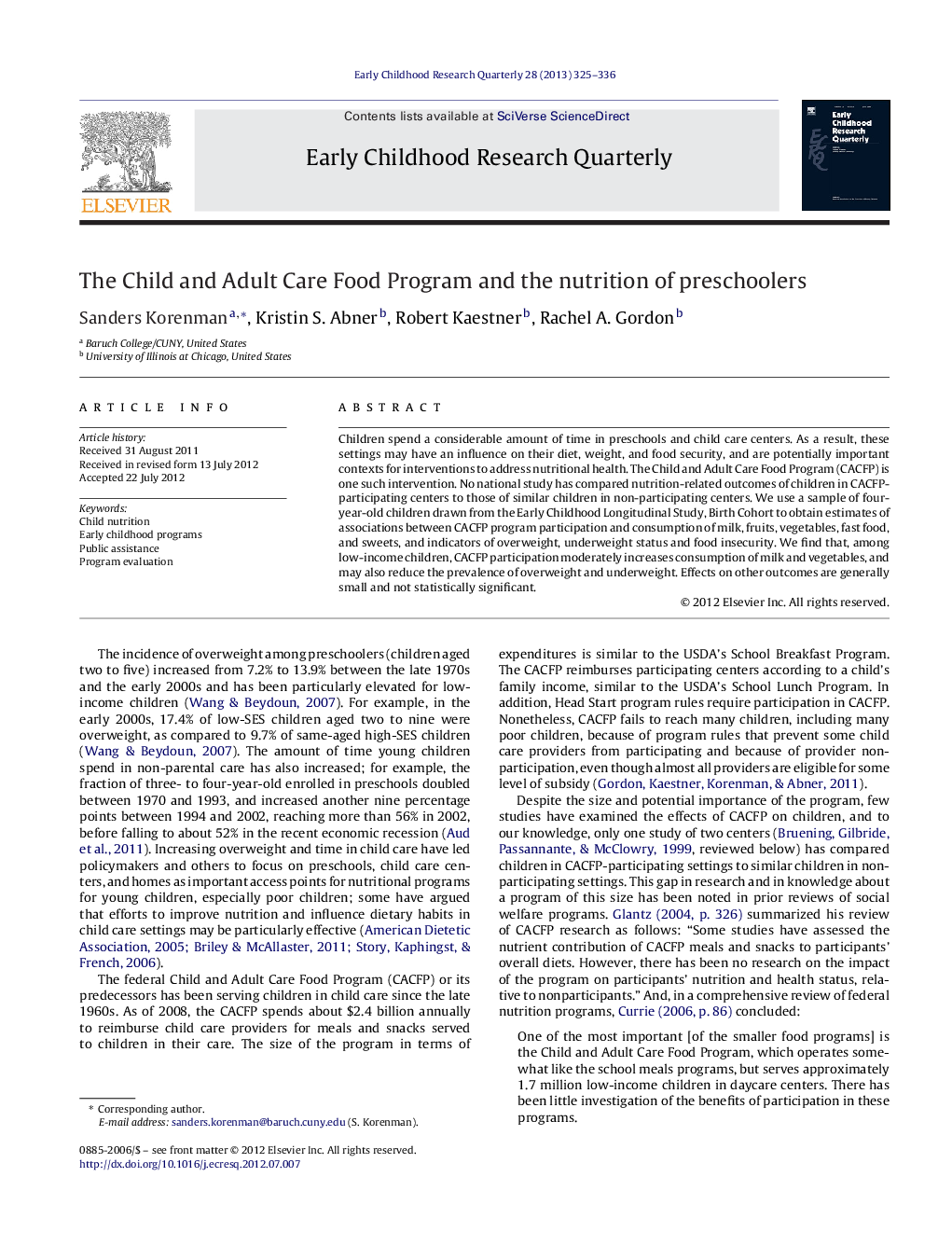| Article ID | Journal | Published Year | Pages | File Type |
|---|---|---|---|---|
| 354020 | Early Childhood Research Quarterly | 2013 | 12 Pages |
Children spend a considerable amount of time in preschools and child care centers. As a result, these settings may have an influence on their diet, weight, and food security, and are potentially important contexts for interventions to address nutritional health. The Child and Adult Care Food Program (CACFP) is one such intervention. No national study has compared nutrition-related outcomes of children in CACFP-participating centers to those of similar children in non-participating centers. We use a sample of four-year-old children drawn from the Early Childhood Longitudinal Study, Birth Cohort to obtain estimates of associations between CACFP program participation and consumption of milk, fruits, vegetables, fast food, and sweets, and indicators of overweight, underweight status and food insecurity. We find that, among low-income children, CACFP participation moderately increases consumption of milk and vegetables, and may also reduce the prevalence of overweight and underweight. Effects on other outcomes are generally small and not statistically significant.
► There has been little research on the effects of the federal CACFP on children's weight, diet, and food insecurity. ► This is the first large-scale evaluation of the effects of the CACFP to compare participants to similar nonparticipants. ► Propensity-score regressions indicate CACFP participation among low-income preschoolers associates with moderate improvements in diet. ► There is little evidence that CACFP increases overweight/obesity or consumption of less healthy foods.
